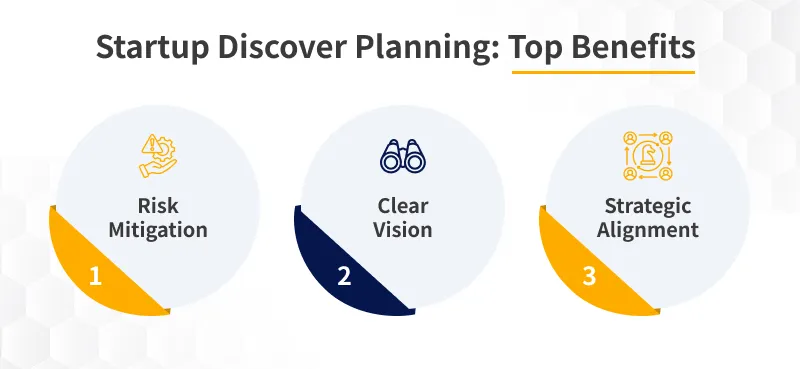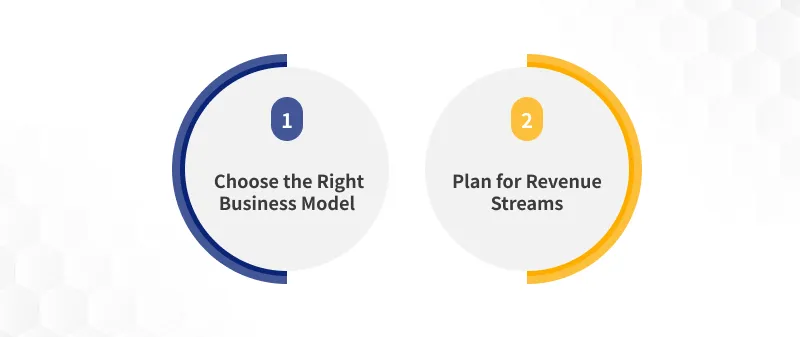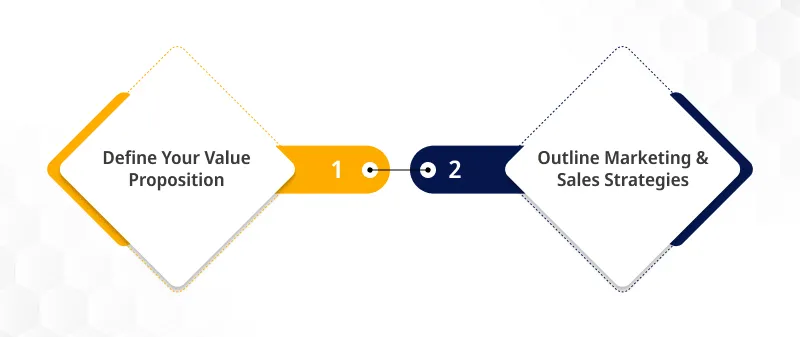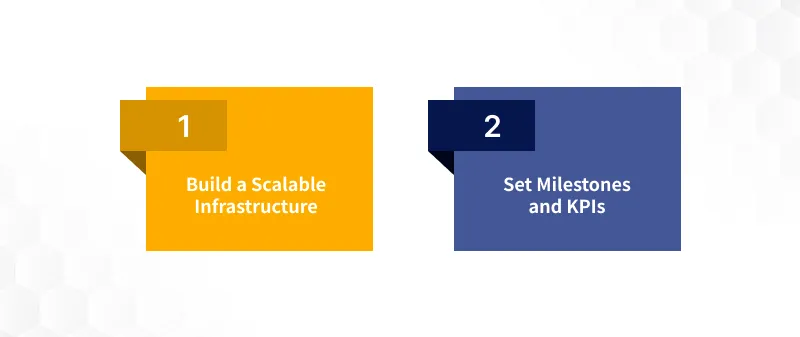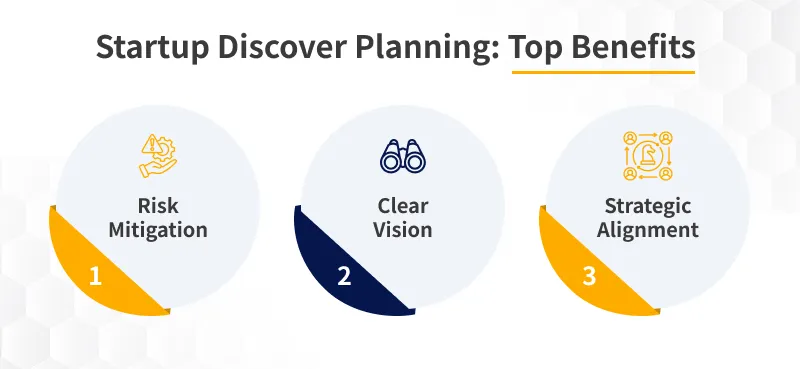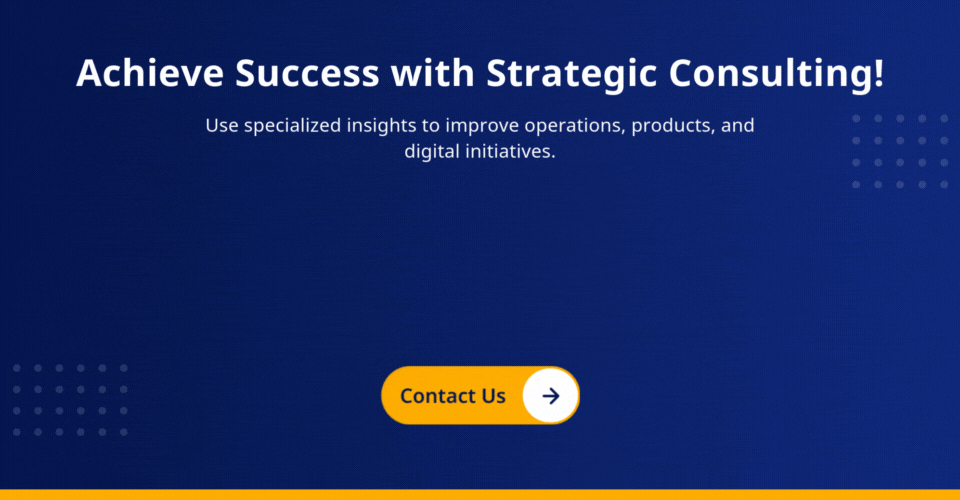Are you planning to launch your startup?
If your answer is yes, this will be a worth-reading blog post.
Starting a new business is a thrilling journey. It is a promise of innovation & the excitement of bringing a new vision to life for many business owners.
However, in recent years, about 90% of startups have faced losses within their first year of operations.
So, “How can you ensure your startup business survives & thrives also?”
This is where startup discovery planning comes in. It is a vital strategy that helps convert your initial idea into a successful enterprise.
Let’s read this blog post, where you will learn about the 6 essential steps of startup discovery planning to secure your business success. It will also ensure you are ready to turn your startup dream into a big business.
Understanding Startup Discovery Planning
Discovery planning for startups is a strategic approach many startups use to get important information and valuable insights that shape their business activities.
It includes deep market research, understanding customer requirements, analyzing related competitors, etc.
Startup discovery planning steps allow business owners to validate their ideas, make data-driven decisions, and build a strong foundation for their business. This process minimizes uncertainty & also ensures that the startup addresses real-world problems.
Benefits of Startup Discovery Planning
Here is the list of top advantages of startup discovery planning and why you should remember this planning before starting your business.
1. Using discovery planning, startups can identify potential risks & challenges prior. This approach helps them create strategies to mitigate these risks to prevent costly errors.
2. Discovery planning generally helps entrepreneurs gain a clear understanding of their business objectives/goals.
3. From product development to marketing strategies, you must align with the overall vision and market needs for strategic alignment.
Achieve your goals with our expert discovery planning.
Discovery Phase Checklist
Let’s look at the following components of the startup discovery planning phase as discussed below:
1. Marketing Strategy: This includes short & long-term objectives, communication, and branding.
2. Current Alternatives: The various other marketplace offers viz. items and services are available as alternatives. This includes buying habits, customer service quality, engagement models, and other variables.
3. Client & Company: The project’s main aim, research & marketing materials, and the reasoning for any changes/revisions are all included in this.
4. Market: By using online/offline resources, you must do a comprehensive study based on internal/external factors. You may use white papers, subscriptions, and industry-related periodicals.
5. Technical Requirements: The components included in this are solutions, specifications, and an updated technology package.
6. Competitive Analysis: It involves the evaluation of competitive offerings and the sources of these services.
7. Target Base: User tales, consumer avatars, and demographics are all involved in this.
8. Additional Data & Information: This element identifies any missing components.
6 Essential Startup Discovery Planning Steps To Know
Have a look at the comprehensive discussion of the top 6 steps of strategic discovery planning for your business:
Step 1 – Define Your Vision & Goals
By following this first step of your startup discovery process, you lay a strong foundation for your startup business. This step ensures that you and your team are aligned & focused on tackling the journey ahead with purpose and precision.
Clarify Your Startup Vision
A clear cum compelling vision builds the foundation for your startup. It defines your business purpose and strategic decisions and inspires your software team. This lets you stay focused on your goals, especially during hard times.
1. Reflect on your purpose: First, consider why you started your venture. What problem are you solving, and why does it matter?
2. Be aspirational yet realistic: Your vision should be strong enough to inspire but also attainable. It should balance being a lofty goal with being a realistic target.
3.,Keep it concise: A vision statement should be clear & concise i.e. one or two sentences. It should be easy to remember & communicate.
4. Make it inspiring: Use language that matches emotionally with your target audience. Your vision should motivate & unite your team, stakeholders, and customers.
Set SMART Objectives
Now, you must Set SMART Objectives in your startup discovery planning phase. The term “SMART” says:
1. Specific: Objectives should be clear and specific. This outlines exactly what you want to achieve without ambiguity.
2. Measurable: You must track your progress, so objectives must be measurable. This involves defining success criteria and monitoring metrics.
3. Achievable: Your objectives should be realistic & attainable. It should consider your available resources & constraints.
4. Relevant: Make sure that your objectives are aligned with your overall business vision and relevant to your startup’s mission & strategic direction.
5. Time-bound: Every objective should have a deadline or specific time frame to make a sense of urgency & to help prioritize tasks.
Read Also: – Reducing Deployment Failures: How DevOps And Analytics Prevent Costly Downtime
Step 2 – Conduct Market Research
Do deep market research to know your target audience & analyze competitors. You can further make informed decisions that enhance your product value & competitive positioning.
Understand Your Target Audience
Knowing who your potential customers are, what they actually need, and how they behave allows you to effectively make your product/service to meet their demands. Here are some methods for gathering demographic & behavioral data:
1. Surveys & FAQs: Conduct online surveys to gather demographic information (age, gender, income, education) and psychographic data (lifestyle, values, interests).
2. Interviews: Engage with a small group of customers to gain valuable insights into their behaviors, preferences, and pain points.
3. Social Media Analytics: Use tools like Facebook and Twitter Analytics to understand the interests & behaviors of your online followers.
4. Market Reports: Access industry reports & market studies to gather comprehensive data on market trends & consumer behavior.
5. Web Analytics: Use Google Web Analytics to track visitor behavior on your website, including time spent, pages visited, and conversion paths.
Analyze Competitors
You must identify the type of your competitors and collect data on their products, pricing, marketing strategies, customer reviews, and market positioning. Here are some tools/techniques to do competitive analysis:
1. SWOT Analysis: Perform a SWOT (i.e. Strengths, Weaknesses, Opportunities, Threats) analysis to evaluate your competitors & identify strategic opportunities.
2. Competitive Matrix: Create a matrix to compare pricing, key features, and MVP development services that your competitors offer.
3. Benchmarking: Compare your business performance against industry standards or competitors to identify gaps & areas for improvement.
4. Social Media Monitoring: Track competitors’ social media activities using tools viz. Hootsuite and Sprout Social to understand their engagement strategies & audience interactions.
5. Online Tools: Utilize tools viz. Ahrefs, SEMrush, and SimilarWeb to analyze competitors’ online presence via their search engine rankings, keywords, and website traffic.
Step 3 – Validate Your Business Idea
By validating your business idea through an MVP & iterating based on user feedback, you can develop a product that has a better chance of succeeding in the market.
Create a Minimum Viable Product
A Minimum Viable Product is a simplified version of your product that includes only the necessary features to solve the primary problems. An MVP aims to test your business idea with minimal investment. Here are some steps to develop & test an MVP:
1. Identify Core Features: Focus on the essential features that address the main problem your product is solving. Avoid adding unnecessary functionalities at this stage.
2. Develop the MVP: Create a basic product version with the identified core features. Ensure it is functional and provides value to the user, even if it needs to be fully polished.
3. Launch to a Small Audience: Release the MVP to a limited audience. This allows you to gather initial feedback without the pressures of a full-scale launch.
4. Monitor User Interaction: Use analytics tools to track how users interact with your MVP. Pay attention to usage patterns, feature engagement, and any issues.
5. Collect Feedback: Actively seek feedback from your initial users through interviews, surveys, and direct communication.
Gather Feedback & Iterate
You must conduct surveys to gather structured feedback on their experience with the MVP and conduct one-on-one interviews to gain deeper insights into their needs, preferences, and pain points. The iterating process involves:
1. Prioritizing Feedback: Analyze the feedback to identify common themes & prioritize changes that will significantly impact user satisfaction/product performance.
2. Continuous Testing: After making various improvements, continue to test the product with users to ensure the changes have resolved the issues & added value.
3. Making Improvements: Implement the necessary changes & enhancements based on the feedback received. This involves fixing bugs, improving existing functionalities and adding new features.
4. Iterative Development: Repeat the process of gathering feedback & making improvements iteratively. Hire top software developers who ensure that your product evolves per user needs & market demands.
Unlock growth with our strategic discovery planning.
Step 4 – Develop a Robust Business Model
By developing a robust business model & planning for diverse revenue streams, you ensure your startup has a sustainable and scalable financial foundation. This step is essential for securing long-term startup success strategies.
Recognizing the role and importance of a business plan helps translate that model into clear financial projections and keeps investors aligned with your long-term vision. This step is essential for securing long-term startup success strategies.
Choose the Right Business Model
There are many versions of the business model. You can choose a subscription-based, freemium, marketplace, Direct Sales, and advertising model in your startup discovery planning phase. Some notable factors to consider when choosing a business model:
1. Revenue Potential: Assess the profitability of each model. Consider how much revenue each customer or transaction can generate and the overall scalability of the model.
2. Competitive Landscape: Evaluate the business models used by competitors. Determine if adopting a similar model can provide a competitive edge or if an innovative approach could differentiate your startup.
3. Cost Structure: Analyze the costs of implementing and maintaining the business model. Some models may require significant upfront investment or ongoing operational costs.
4. Flexibility: Choose a model that can adapt to changes in the market or your business strategy. Flexibility ensures that you can pivot or expand as needed.
5. Market Fit: Ensure your business model aligns with your target market. Understand what your customers will pay for & how they prefer to purchase.
Plan for Revenue Streams
In your startup discovery planning phase, it is essential to identify potential revenue streams, viz., product sales, service fees, advertising revenue, subscription fees, affiliate income, and commission fees. Some powerful strategies for diversifying income sources:
1. Expand Product Offerings: Introduce startup product consulting services to attract a broader customer base and increase overall sales.
2. Enter New Markets: Explore opportunities in different geographical regions or customer segments. Adapting your offerings to suit new markets can only open up additional revenue streams.
3. Partnerships & Collaborations: Form strategic alliances with other companies to co-create products, cross-sell, or bundle offerings. This can enhance your value proposition and generate additional income.
4. Upselling & Cross-selling: Encourage existing customers to purchase higher-end products or additional services. Personalized recommendations and loyalty programs can boost customer spending.
5. Use Technology: Utilize technology to create innovative revenue streams, such as offering digital products, implementing AI-driven services, or developing mobile apps.
Read Also: – DevOps As A Service: Revolutionizing Software Deployment
Step 5 – Create a Go-to-Market Strategy
By defining a clear value proposition & outlining comprehensive marketing/sales strategies, you can ensure that your go-to-market approach is effective & well-coordinated. This step attracts and retains customers.
Define Your Value Proposition
A value proposition is a clear statement explaining how your product/service solves a problem, differentiates from competitors, and delivers specific benefits. Some tips for developing a compelling value proposition:
1. Understand Your Audience: Research your target customers thoroughly to understand their needs, preferences, and pain points.
2. Highlight Benefits, Not Features: You must focus on your product’s benefits rather than just listing features. Explain how it improves the users’ situation or solves their problems.
3. Be Clear and concise. Your value proposition should be easy to understand and communicate. Avoid jargon and keep it brief, i.e., one or two sentences.
4. Differentiate from Competitors: Identify what makes your product unique & why it is better than alternative solutions.
5. Test & Refine: Gather feedback from potential customers to see if your value proposition matches. Be prepared to tweak & refine it based on their responses.
Outline Marketing & Sales Strategies
There are various marketing channels, viz. digital marketing, social media, content marketing, public relations, and influencer marketing, that you can use in your startup discovery planning. Some sales strategies & techniques for startups:
1. Direct Sales: Develop a dedicated sales team to reach potential customers directly. Train your team on effective sales techniques and product knowledge.
2. Account-Based Marketing: Target high-value accounts with personalized marketing and sales efforts. ABM aligns your marketing and sales teams to work together on closing key accounts.
3. Partnerships & Alliances: Form strategic partnerships with other businesses that complement your offerings. This can help you reach new audiences and create mutually beneficial opportunities.
4. Inbound Sales: Attract potential customers through valuable content and nurture them until they are ready to purchase. Use CRM systems to track and manage leads.
5. Referral Programs: Offer incentives to encourage your existing customers to refer new ones. Word-of-mouth recommendations are efficient for building trust and expanding your customer base.
Navigate challenges with our discovery planning services.
Step 6 – Plan for Scalability & Growth
Planning for scalability and setting clear milestones/KPIs can position your startup business for long-term success and growth. This step ensures that your business expands efficiently and effectively.
Build a Scalable Infrastructure
A scalable infrastructure supports increased demand, higher volumes of transactions, and larger customer bases without compromising performance/quality. Here are some tips for building infrastructure that can grow with your startup:
1. Adopt Cloud Solutions: To expand your business capacity quickly, you must use cloud-based services/platforms. This flexibility avoids the need for constant hardware upgrades and provides on-demand resources.
2. Flexible Workforce: Develop a flexible staffing strategy, including freelancers or part-time employees, to scale your workforce according to demand without overextending resources.
3. Modular Architecture: Design your systems with modular components that can be independently updated/replaced. This approach simplifies scaling specific parts of your infrastructure without disturbing the entire system.
4. Scalable Databases: Choose database solutions that handle growing data & transactions. Consider distributed databases that can scale horizontally by adding more servers.
5. Robust Security Measures: Ensure the security protocols can scale alongside your infrastructure to protect against increased threats.
Set Milestones & KPIs
Milestones serve as checkpoints that indicate growth toward long-term goals, whereas KPIs are specific metrics used to evaluate the performance & success of your business activities. Some examples of KPIs relevant to startups:
1. Customer Acquisition Cost: The cost of acquiring a new customer, which involves marketing & sales expenses.
2. Churn Rate: The percentage of customers who stop using your product/ service over a specific period.
3. Burn Rate: It is the rate at which your startup spends its reserved cash.
4. Customer Lifetime Value: The total revenue customers expect over their relationship with your business.
5. User Engagement: It represents the metrics, viz., daily active users or monthly active users, used to gauge how engaged your customers are with your product.
Common Mistakes Startups Make While Discovery Planning
You can make some common mistakes while entering the startup discovery planning phase. It is necessary to avoid these by knowing about them before. Have a look at these mistakes as listed below:
1. Unrealistic Goals: Startups often set ambitious goals that can lead to frustration. Hence, they need to use measurable objectives to track progress effectively.
2. Overlooking Competitor Analysis: Startups often need to analyze competitors, leaving them unprepared for market competition.
3. Inadequate Validation of Business Ideas: Some startups proceed with full-fledged development without validating their startup ideas, which leads to significant losses.
4. Poor Resource Allocation: Mismanagement of resources, whether time, money, or manpower, can destroy the startup discovery planning process.
5.Ignoring Customer Feedback: Startups often need to incorporate user feedback before building their product based on their initial idea.
6. Insufficient Documentation: It involves not documenting the startup discovery planning process, leading to a lack of clarity & continuity.
From Successful Startups To Big Giants
The startups listed here have achieved massive success in their respective markets and contributed to the growth of the Indian startup ecosystem.
1. Zomato is a globally known online food delivery platform that offers food-related services.
2. Swiggy is one of India’s leading food delivery platforms, which connects users with restaurants & food outlets.
3. Paytm is a digital wallet & financial services platform offering mobile payments, bank accounts, e-commerce and software outsourcing services.
4. Nykaa is an e-commerce platform specializing in beauty, wellness, and fashion products.
5. Urban Company provides a range of home services, viz., cleaning, beauty, maintenance, and repair.
6. PolicyBazaar is an online platform that allows consumers to compare & purchase insurance policies from various providers.
7. Flipkart is India’s largest e-commerce platform, which provides a wide range of products, from fresh fruits to electronic items.
Empower your business with our effective discovery planning.
Key Takeaways
So far, we have seen that utilizing startup discovery planning steps as your startup business strategy brings you great success and builds a strong foundation that can adapt & thrive amidst market uncertainties.
Each of the above-listed startup planning steps ensures you are ready for both the expected and the unexpected market changes. Always remember that startup discovery planning is an ongoing process.
So, stay curious, stay flexible, and let ValueCoders (one of the top Salesforce development companies in India) develop your successful startup roadmap. Hire dedicated software development teams who can help you achieve great success with careful planning & determination.


